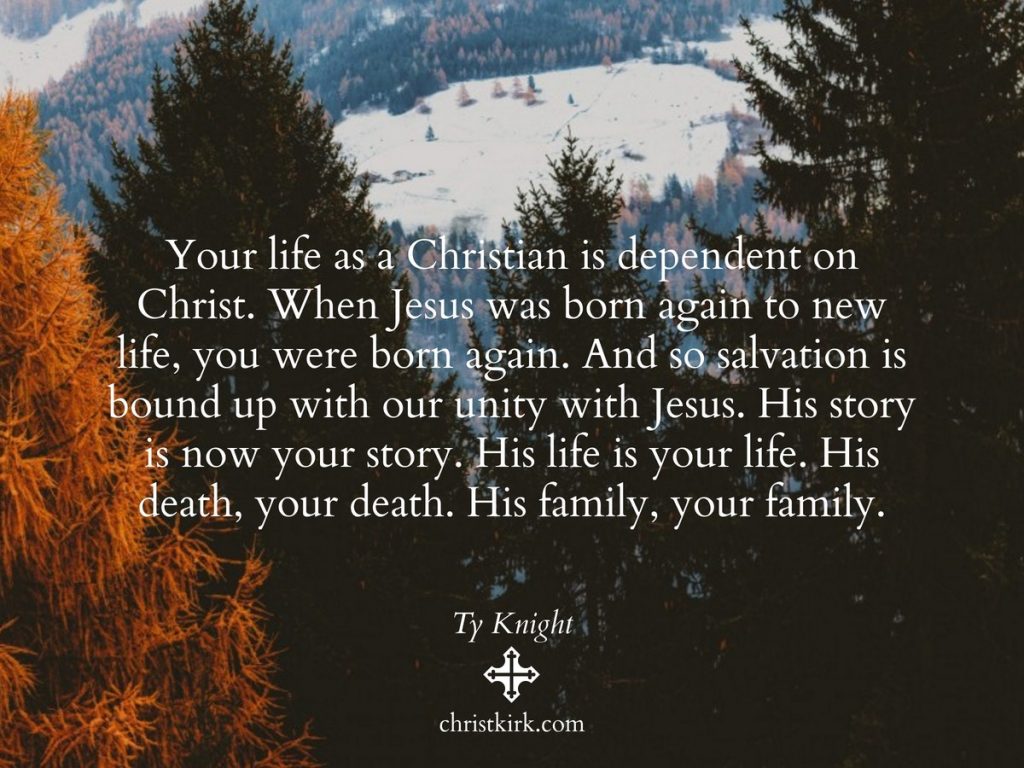Podcast: Play in new window | Download
The Text
“Therefore gird up the loins of your mind, be sober, and rest your hope fully upon the grace that is to be brought to you at the revelation of Jesus Christ; as obedient children, not conforming yourselves to the former lusts, as in your ignorance; but as He who called you is holy, you also be holy in all yourconduct, because it is written, ‘Be holy, for I am holy’ . . .” (1 Peter 1:13-25)
Introduction
Peter writes to the people of God who need to know their identity and their mission in the world. Their identity as the children of God is bundled up with Jesus, the Son of God. You are the elect of God, just like Jesus is God’s elect. Because of the Father’s abundant mercy, you to be born again to a living hope––a hope of life. This happened through the resurrection of Jesus Christ from the dead. And so your salvation is union with Christ. His suffering is your suffering. His life, your life. His Father, your Father. His inheritance, your inheritance. This is the good news that the Spirit has prepared by the prophets and has been preached to you. God has made you his children. He has treated you as his children. Therefore, as his children, be like your holy Father.
Gird Up to Fully Rest (vs. 13)
Because all this is true, Peter exhorts, “Therefore, gird up the loins of your mind…” and prepare for a great action. This charge would recall biblical examples like Elijah (1Kings 18:46), and Jeremiah (Jer. 1:17), and the nation of Israel, who ate the Passover meal with their loins girded, their shoes on, their staff in hand because the Lord was about to deliver them. Those prepared for warfare, for a God-given message, for a great delivery need to gird up the loins.
Peter adds, “and rest your hope fully upon the grace that is to be brought to you at the reveleation of Jesus Christ.” Gird up the loins and rest on the grace. Is this a contradiction, like one foot on the gas and the other on the brake? Paul says in Phillipians 2 after exalting Christ’s work on the cross that saves, “Therefore, work out your salvation with fear and trembling, for it is God who works in you.” (Phil. 2:12-13). You gird up for the work while resting on Jesus Christ.
As Obedient Children Be Holy (vs. 14-16)
Here’s what the girded mind needs to know––you are children of a holy God. God is holy, and so his people are also holy (Lev. 11:45). The rallying call is not try harder, do better, attempt more righteous actions––as if you are capable of producing holiness. Your hope for holiness is that your Father is holy, and you are his child, . This is not legalism, but family resemblance.
Holiness has to do with your ability to be in the presence of God. Isaiah had to be made holy because he was in the presence of the Holy God (Is. 6:4). Israel had to be a holy people like Yahweh because He was in their presence (Duet. 23:14). Hebrews 12:14 says, “Pursue peace with all people, and holiness, without which no one will see the Lord.” Do you want to see the Lord? Do you want to be in His presence? Do you want Him to be in your presence? Then pursue holiness in all your conduct.
Redeemed with Passover Blood (vs. 17-21)
If you call on God as your Father, Peter exhorts the church “to conduct yourselves in fear” knowing that God will judge you as His children. God’s judgement of His children is not at odds with his abundant mercy, grace, and love for His children but demonstrates how much He values us. As children you have been redeemed through the “precious blood of Christ” who is the new Passover Lamb (Ex. 12:2-13). The blood of the lamb identitied God’s chosen people Israel. Peter say you have been marked, identified, redeemed by the blood of Jesus. And this causes a great response in His blood-bought people.
Identity and Obedience
Leave Egypt! Grab your staff, fasten your sandals, gird your loins because we are going to the Promise Land. Just as Israel could not remain in slavery after the Passover, so God’s people can not remain in their slavery to sin. You have been identified and have been delievered by the blood of Jesus. You are free to obey, and you must obey. Obedience is a matter of life and death. If you remain in your sin, in the land of slavery and hard-hearts and hatred for God, you will die.
Born Again to Love Your Family (vs. 22-25)
Now Peter looks at the redeemed people and assumes they are already trekking out of Egypt with a pure soul, obeying the truth, fervently loving the brothers (vs 22), and they should keep it up. This is all possible because they “have been born again through the word of God which lives and abides forever.”
This word is the gospel preached that is able to deliver a nation, turn sinners into children, bring life from death, and gives the identity to the people of God. You are obedient children who have been born again through the Word of God. You are a holy nation that lives a holy life and provides access to your Holy Father. You are the redeemed Passover people, always offering and displaying the blood of the lamb who has delivered you. So gird up your mind, be sober, set your hope fully on the grace of the Jesus Christ, and live as obedient children with your holy Father.
